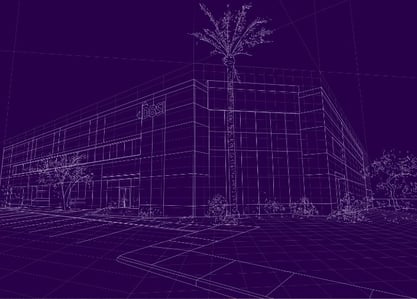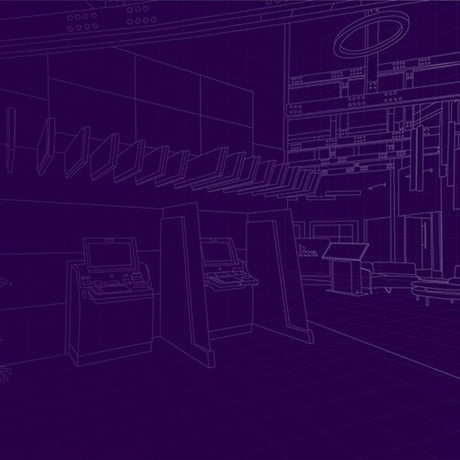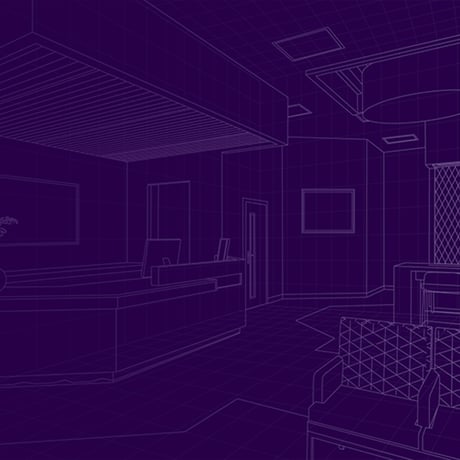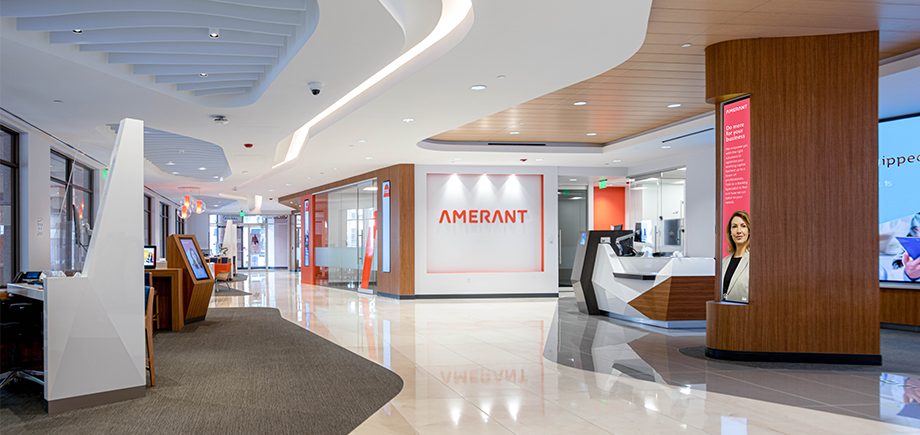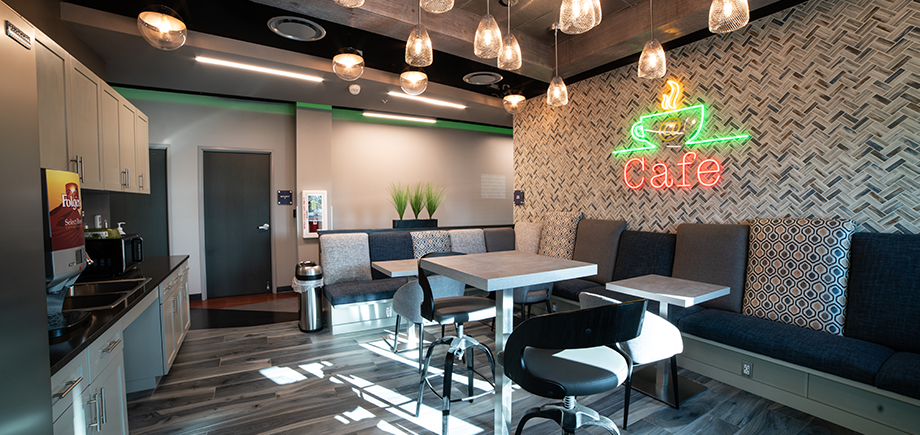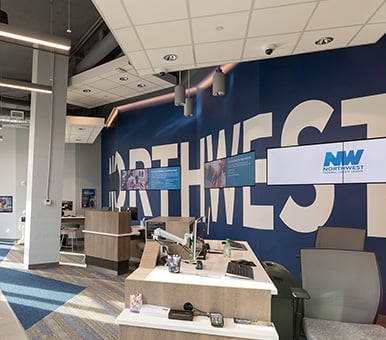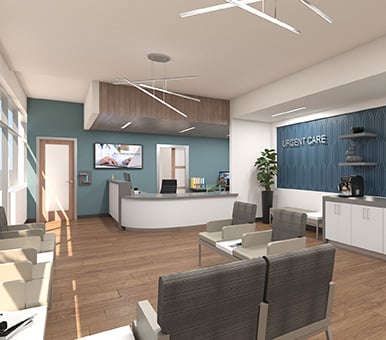3 min read
Your Definitive Guide to Understanding Branch Transformation
Bruce Allen Eastwood : 11/4/21 4:34 PM

What is Branch Transformation?
Transformation is defined as a thorough or dramatic change in form or appearance. This means Branch Transformation is a significant change in your branch, not just some minor cosmetic updates. True branch transformation involves evaluating and innovating your in-branch client experience. Improving your overall strategy and creating a space for continued growth. Your transformation design should be able to be applied to multiple branches in your network and customized to the hyper-local market.
Branch transformation includes:
- Exterior Technology (digital signage, drive thrust, etc.)
- Curb Appeal (signage, building features, location, landscaping, etc.)
- Interior Design (flow patterns, waiting areas, features walls, etc.)
- Work Stations (teller towers, flexible work stations, private offices, community rooms)
- Client Journey Technology (cash automation, self-service options, video conferencing, digital signage)
- Client Experience Features (staff process, discovery bars, etc.)
.jpg?width=709&name=FirstCU-Testamonial-1920x1080%20(3).jpg)
What's the difference between Branch Transformation and Branch Modernization?
If you are looking for a quicker fix, something that is closer to those minor cosmetic updates, and including some new client journey features, branch modernization is your speed.
Branch Modernization includes:
- Cosmetic changes
- Millwork additions
- Technology upgrades
- Staff process improvements
Why is branch transformation important?
Don’t be fooled by the shift to online or mobile banking and the myth that branches are becoming irrelevant. Even with the digital acceleration caused by COVID-19, this is far from the truth. In fact, you and your branches are needed now more than ever.
However, just because clients need your expertise and prefer to get it in person, it doesn’t mean that they will come to your institution to get it. Clients today are not only pickier than ever, but they also have more options. Want proof? The average client has 16 financial products in their ‘wallet’, yet only 2.5 of those are with their primary financial institution.
The financial institutions who deliver on client expectations will be the one that wins (and keeps) their business, and when it comes to branches, the people expect a retail-friendly environment that meets (or exceeds) the standard of the other retail shops they visit, from design to technology to service models. Are your branches delivering on this? Because the average branch is not.
So, you know you need to change, but where do you start? When getting ready to take the steps toward building or transforming a branch, there are a few things to consider: market opportunity of the location, the role it plays in your network, goals/objectives of the branch, area demographics, how you will measure the success, your budget, and your ideal timeline. The most important of this list, and the catalyst for delivering your entire project, is deciding upon the approach.
Design-Build for Branch Transformation
Under this method, an owner typically hires a single entity (like DBSI) to create the design and implement the construction process to completion. This typically consists of all design, millwork, engineering, municipal permit submittals, selection of subcontractors, coordination of vendors, and on-site project supervision. With this method, all parties work together for a common goal without worrying about communication constraints. Plus, if there is a guaranteed maximum price agreed to early on, there’s a reduced likelihood of pricing changes throughout the process.
Even if you have preferred local contractors you want to use for a project, it doesn’t mean you have to use a design-bid-build approach. Design-Build firms (like DBSI) can incorporate them into their bidding process so they are included. This removes risk and responsibility from you, while still giving business to your preferred partners. On the other hand, research efforts indicate that projects completed with the design-build approach regularly outperform their design-bid-build counterparts in terms of cost and schedule performance, quality, reduced risk, change orders and the ability to respond to real-time, needs. You probably think we’re biased, being a design-build firm and all... so we pulled some of those hard facts on why you may want to consider going with the design-build approach. A study3 by Penn State found that compared to Design-Bid-Build, Design-Build projects had a six percent reduction in change orders, delivered 33% faster overall, and cost 6% less.
Finding YOU in your Branch Transformation
You can’t build a branch that screams YOU if you don’t know who you are, your goals, and what matters most to both your institution and the people you serve. That is why the first phase in our design-build approach is all about gaining executive alignment on what your brand stands for (or what you want it to) and identifying your objectives.
Any good design goes beyond just floorplans, including recommendations for the right technologies, software, client journey, interior finishes, furniture, and even staff training packages to deliver the strategic intent.
Want to Learn More About How DBSI Does Branch Transformation? Let's talk.

